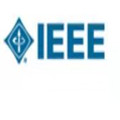Public-key quantum money is a cryptographic proposal for using highly entangled quantum states as currency that is publicly verifiable yet resistant to counterfeiting due to the laws of physics. Despite significant interest, constructing provably-secure public-key quantum money schemes based on standard cryptographic assumptions has remained an elusive goal. Even proposing plausibly-secure candidate schemes has been a challenge. These difficulties call for a deeper and systematic study of the structure of public-key quantum money schemes and the assumptions they can be based on. Motivated by this, we present the first black-box separation of quantum money and cryptographic primitives. Specifically, we show that collision-resistant hash functions cannot be used as a black-box to construct public-key quantum money schemes where the banknote verification makes classical queries to the hash function. Our result involves a novel combination of state synthesis techniques from quantum complexity theory and simulation techniques, including Zhandry's compressed oracle technique.
翻译:公用钥匙量子资金是使用高度纠缠的量子国家作为一种货币的加密建议,这种货币由于物理法则而可以公开核查,但又能抵制伪造。 尽管人们对此兴趣很大,但根据标准的加密假设,建立可实现安全的公用钥匙量子资金计划仍然是一个难以实现的目标。即使提出可信的候选方案也是一项挑战。这些困难要求更深入、更系统地研究公用钥匙量子资金计划的结构以及它们可以依据的假设。受此驱动,我们首次将量子资金和加密原始物质黑盒分离出来。具体地说,我们表明,不能将防碰撞的散货功能用作黑盒,用以构建公用钥匙量子资金计划,在这种计划中,银行票据的核查可以对散子功能进行古典的查询。我们的结果是,从量子复杂理论和模拟技术(包括Zhandry的压缩手巧技术)中,将国家合成技术进行新的组合。



